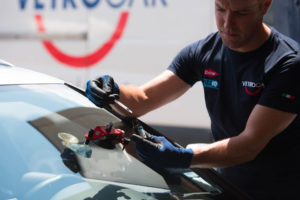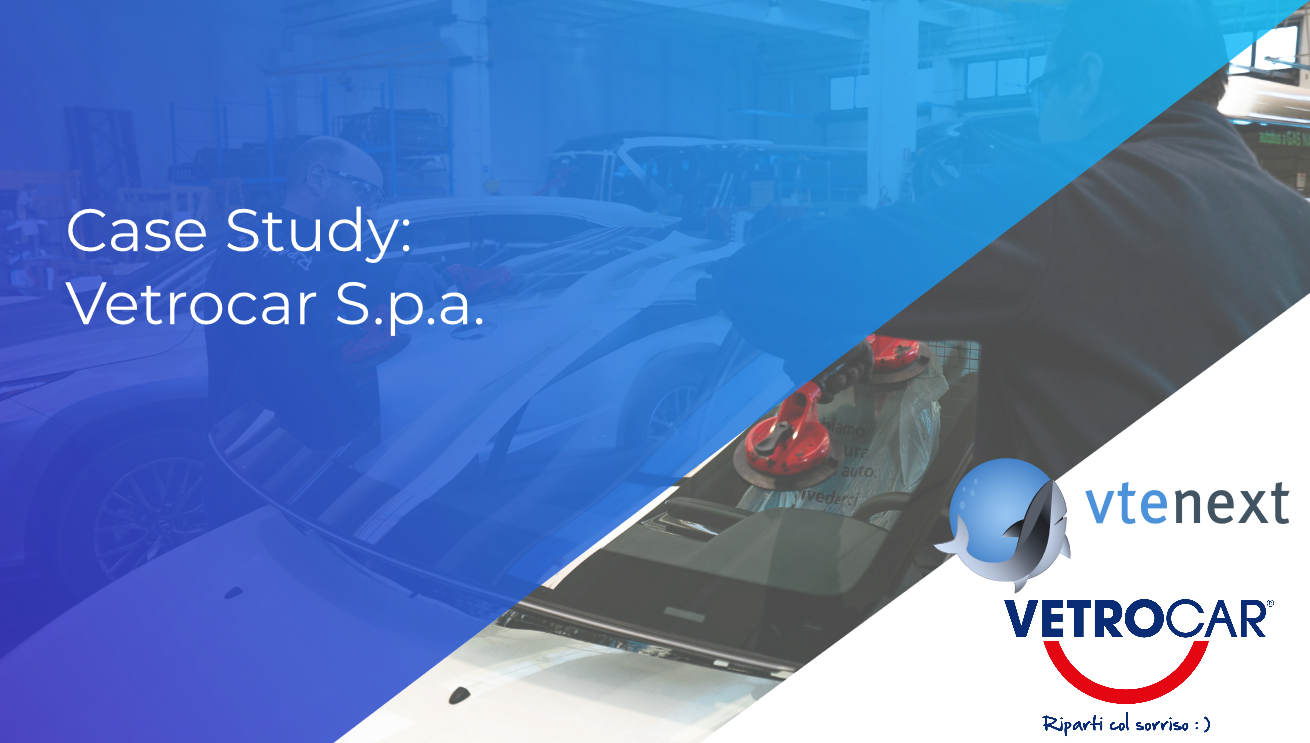From Sales Department to Internal requests, how to readapt and digitize efficiently business processes with vtenext
Thanks to vtenext and its Business Process Management and Notation (BPMN) engine it was possible to convey all company data in one platform, allowing the automation of sales processes and the management of accidents, leads, tickets, purchases and human resources.
Company: Vetrocar S.p.a.
Field: Automotive
Headquarter: Italy
Employees: 501 – 1.000
The Company
Vetrocar was founded in 1999, in 2015, following a path of consolidation of the experience made in the filed, the company went through a deep reorganization that allowed the company to become the first Italian player.
Today Vetrocar customers are both B2B and B2C, in particular:
- Company fleets and car rentals
- Insurance agencies
- Customer without any policy that require the service
The challange
In the beginning the sales area was managed by only one person. The recent expansion brought the necessity of creating a more structured area.
One of the biggest challenges that emerged with this change was the data share: soon they found out that long emails and big excel files weren’t the best way, in fact often the data got lost in the process. It was fundamental to act in a coordinated way to build all the tasks, starting from the sales ones.
“vtenext is a flexible solution that is way more than just a CRM and that let us implement different processes. Furthermore the possibility to create and automate our business processes allowed us to reduce stress and let the people focus on their jobs. All this because processes provide security.”
– Cristian de Grazi IT Manager at Vetrocar S.p.a
The project
There are four business process implemented with vtenext up to now:
1) Sales processes
The first step was to upload the database of all insurance companies in the CRM, giving in this way the possibility to build sales reports (for example how many accident cases are forwarded by each agency).
Soon after Vetrocar decided to incorporate even one of the previous phases, that is the reporting of a customer by the agency itself.
The process is pretty simple: the customer calls the insurer reporting the accident, the insurer logs in the dedicated portal and forwards it to Vetrocar by filling a webform to classify the customer. Now the data are directly uploaded in the CRM, in the Lead module. The Headquarter, through the sales person in charge will assign it to the local branch. The record is synchronized in real time in the ERP thanks to the integration between the two platforms.
Some insurance companies still prefer direct contact with the Vetrocar salesman, so, instead of filling the webform, they directly call the person in charge that will manually upload the lead in the CRM, even through mobile app. Then the process goes on in the same way as the other.
2) Lead management
In the past leads that didn’t come from insurance companies were managed only by phone. Today they are also managed within the Lead module, thanks to the implementation of a process: the potential customer calls a toll free number, an operator creates the record in vtenext, and according to its geographical position is assigned to the local branch. The operator connects the customer and the Vetrocar branch through the phone, the latter also receives an automatic email containing the data collected by the operation in the CRM. Thanks to the integration with the VoIP software in use some data of the caller, like the telephone number, are directly reported in vtenext saving time and avoiding errors.
3) Internal ticketing management
Internal assistance for coworkers and franchisees is divided in categories (es. office assistance, smile vte, etc.), which are directly managed by the process and automatically assigned to the user in charge. This process “lightens” both users that open tickets, that don’t have to know the person to contact, and the IT technicians.

4) Purchase management
Purchases are directly managed in vtenext through an authorization system: users are divided in groups, each one has a specific purchase autonomy. If the amount is higher an authorization request is forwarded to the manager. Once confirmed the transport order is directly uploaded in vtenext CRM and, thanks to the direct integration, is also reported in the ERP.
5) Human Resources management
Even though at the moment the HR management module is at the initial phase, in it are already tracked the benefits of each worker: pc, smartphone and cars.
Present benefits and future plans
It’s not easy to implement a complex CRM project but the internal training and the hiring of senior resources are showing their positive results.
Below the main benefits:
- Decrease in time waste: users can focus on their work letting the process do all the repetitive and low value activities
- Better access to information: which are no longer spread, nor duplicated or redundant. In fact they are all conveyed in one platform
- Ease in data analysis: the ability to access all information and have a clear view give the possibility to create custom and accurate reports
- Higher ticket traceability and possibility to sort them in order to justify the resources involved and the budget
- Management in one interface all the activities of the accident department
- Deleting of discrepancies between orders and approval in purchases
To maintain those results in time is necessary to keep the database of the agenzie clean by deleting for example duplicates and the one that closed. In addiction, every two months, all processes are re-checked.
This is just the beginning, there are multiple goals for the future:
- Improvement and increase in the activities that can be performed via vtenext Mobile App
- Improvement in the HR management flow (scouting for new people, candidates management etc.) in order to avoid the purchase of a HR management software
- Integration of the Customer Satisfaction in the CRM: they want to request the compilation of a survey everytime an accident is concluded
- Marketing module implementation: analysis and management of marketing flows, like for example the newsletter sending and the GDPR management
- Optimization of the agency portal: according to the authorization that every agency have they can display different functionalities and information like for example the forum, the number of forwarded accidents, specific reports or book an appointment with the salesman in charge.
